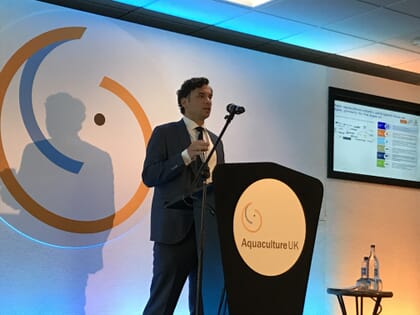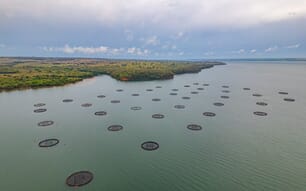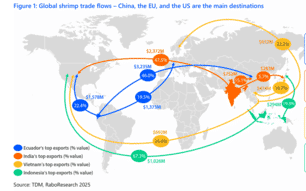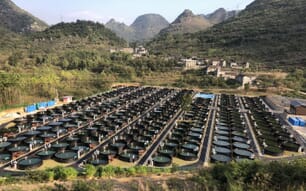
So believes Gorjan Nikolik, senior seafood analyst at Rabobank, who was speaking about the subject at this week’s Aquaculture UK Conference.
He noted that he had seen an increasing number of investors looking into sourcing alternatives to fishmeal and fish oil in the aquaculture industry “since the fishmeal supply bottomed out in 2016, due to the impact of El Nino”. It is currently a fertile time for alternative sources but, he asked, how should investors – such as Rabobank – decide where to put their funds?
Algae, for one, he noted was a good bet: both because of the scale of the capital investments already made in this field, and also due to the impressive track records of companies – such as DSM, Evonik and Cargill – which are now involved. “Algal production might require huge capital investments,” he reflected, “but it’s an area where the smart money is being spent, Cargill alone have invested $500 million in algal production”.
Equally methane-based production of bacterial proteins, such as Calysta’s Feedkind, he noted as being a good bet, also due to the level of investment already in the sector, as well as the price and availability of methane.
Insect production, on the other hand, he sees as having a slightly different appeal. Indeed, Rabobank recently invested in a €45 million insect protein production project led by the Dutch producer Protix. “It’s a bit of a junior partner in the equation,” he reflected, “but its appeal lies in the fact that it is low cost, low scale and has a low barrier to entries”. Other attractions, he said were the rapid (7-day) production cycle of the black soldier fly and – crucially – the decision of the Swiss food technology giant Bühler to get involved in the project.
“This adds execution to what was already a good plan on paper,” Gorjan explained.
Looking at the aquaculture industry in general, he reflected on the growing interest from investors, over the last decade or so.
“I’ve notice a huge growth of interest from every type of investor – venture capitalists, private equity, listed equity and strategic investors – since 2005 [the year he started in his role],” he observed. “I think you have the wind in your backs now.”
He was, however, less convinced by the investment opportunities offered by other sectors of the aquaculture industry.
“Shellfish production,” he reflected, “tends to be too fragmented in terms of producers, very diverse and comes with a high environmental risk and so is not a darling of the investment community”.
He was also sceptical about the opportunities offered by growing species such as salmon to market size in land-based production facilities.
“Investors currently have a cautious attitude towards land-based production – they require high capital investment, the biological risk is not – in practice – that much lower than open systems, and they have a poor recent history in terms of performance,” he explained. “I wouldn’t say never, but there are too many dice being thrown”.






